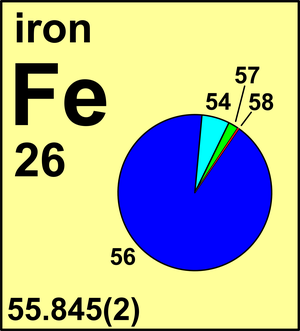In ferrocyanide ion, Fe (CN) 6 4– Here, Z = atomic number of iron = 26. X = number of electrons lost due to oxidation of Fe to Fe 2+ = 2. Y = number of electrons donated by 6CN – = 6 x 2 = 12. Iron is a chemical element with an atomic number 26. A symbol Fe represents it. It is the most common element that is found on the earth. Unlike that of other elements, iron exists at oxidation states of -2 to +6. Fe has +2 oxidation state here hence it has 24 electrons with 12 electrons donated by ligand CN - ve hence the effective atomic number i.e. EAN is 12 +24= 36 ans.
How do you determine the electron configuration of Fe?
2 Answers
The ground state electron configuration of Fe is:
Explanation:

For all but about 20 transition metals, the Aufbau diagram is a useful tool that helps to determine the ground state electron configuration of an element.
Iron (Fe) is a transition metal that follows the Aufbau rule of the filling of atomic orbitals. The atomic number of Fe is 26, which means that its atoms contain 26 protons in their nuclei, and if neutral, 26 electrons in their electron clouds. The ground state electron configuration of Fe is:

If you look at the Aufbau diagram, you can see that the
Explanation:
Atomic No Of Fecl3
From the periodic table, iron has atomic number
Numbers of electrons in each atomic orbital is twice the number of electron orbits in each orbital since two electrons of the opposite spin occupy one orbital:
and so on so forth.
Electron orbitals fill according to the Aufbau (Build-up) Principle. That is, each added electrons fill orbitals of lower energies before filling those of higher energies, so as to minimize the electrostatic potential energy within the atom.
Red arrows (from top to bottom) in the diagram below indicates the direction of increase in energy of each orbital.
The
You might find something like this on your scratch paper.
Giving the electron configuration
(arranged by principle energy level, e.g.
Notice that the

Atomic No Of Fe Metal
Related questions

